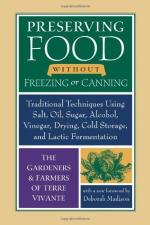|
This section contains 474 words (approx. 2 pages at 300 words per page) |

|
Alcohol occurs naturally when fruits, vegetables, and grains exposed to bacteria in the air undergo the process of fermentation. People can create and speed up the conditions for fermentation to produce ethyl alcohol, also called ethanol. Pure ethanol is not drinkable but is an ingredient of alcoholic beverages, such as beer, wine, and liquors. The concentration of ethanol in beer is approximately 4 to 5 percent; in wine it is 11 to 12 percent; and in most liquors it is 40 to 50 percent. Also, alcoholic beverages are often diluted by water before they are consumed.
The Effects of Alcohol on the Body
Ethanol acts as a depressant on the central nervous system, which is made up of the brain and spinal cord. This means it slows brain and nervous system function. It produces sedation and even sleep at higher doses. When people drink a moderate amount of ethanol, they may feel...
|
This section contains 474 words (approx. 2 pages at 300 words per page) |

|


